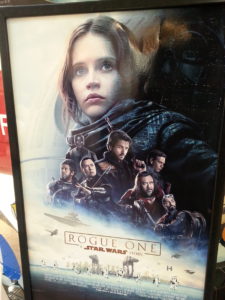 My brother Amahl Dunbar of the Swamp Media Group (producers of The Space Detective), and I recently wrote our first movie review for Marvel’s Dr. Strange. As promised at the end of that piece, we’re back to review the latest installment of the Star Wars franchise; Rogue One: A Star Wars Story directed by Gareth Edwards. The following is our discussion and analysis of Rogue One. Please be advised that if you haven’t seen the movie yet, this may spoil it for you.
My brother Amahl Dunbar of the Swamp Media Group (producers of The Space Detective), and I recently wrote our first movie review for Marvel’s Dr. Strange. As promised at the end of that piece, we’re back to review the latest installment of the Star Wars franchise; Rogue One: A Star Wars Story directed by Gareth Edwards. The following is our discussion and analysis of Rogue One. Please be advised that if you haven’t seen the movie yet, this may spoil it for you.
Anwar: First off bro welcome back for our second review, this time of Rogue One: A Star Wars Story. We were children when Episodes IV-VI were produced and thus go way back with the Star Wars franchise. I’m going to further date us and say that in addition to seeing the original movies, we also played with some of the original toys made by Kenner – the action figures, ships, and vehicles. That was a great time to be a child. We were also young enough and of sound mind when the prequels were produced – Episodes I-III, and recently the continuation of the series with Episode VII: The Force Awakens. Rogue One: A Star Wars Story is interesting conceptually in that it isn’t officially one of the “Episodes”, but instead is in itself a prequel which chronologically takes place between Episodes III and IV. Do you have any opening comments or thoughts?
Amahl: Yes. The tone of Rogue One was set early in the film when the Mother of the key character was killed off as you’ll describe. That let the audience know that this was going to be a serious story in the Star Wars universe.
Anwar: Okay so in terms of what Rogue One: A Star Wars Story is about, it takes place after Episode III: The Revenge of the Sith, where we got a glimpse of the early stages of the Death Star being constructed. By the way in terms of storytelling, at least in the movies, the Star Wars films never really mark time, like Star Trek does. We only know that the story is taking place, “Long ago in a galaxy far, far away,” the hallmark intro of the films which was omitted from this one in addition to the crawling introductory passage.
Going back to the story, at the end of Episode III, we got glimpses of Emperor Palpatine, Darth Vader and Grand Moff Tarkin looking on as the Death Star was being built. Rogue One starts with Imperial Director Orson Krennic (Ben Mendhelsohn) traveling to the planet Lah’Mu to re-enlist the help of engineer Galen Erso (Mads Mikkelsen) to help finish construction of the Death Star. Erso who hoped to disappear into a life of agriculture and his wife Lyra (Valene Kane) who is murdered during the confrontation, have a daughter named Jyn who escapes, and is found by their ally Saw Gerrera (Forest Whitaker).
Fifteen years later, Jyn (Felicity Jones) grows up and is a prisoner of the Empire. She is rescued by Cassian Andor (Diego Luna) of the Rebellion and his reprogrammed Imperial Droid K-2SO (Alan Tudyk) and is asked to help find Saw Gerrera who himself is sought out by an Imperial pilot named Bohdi Rook (Riz Ahmed). Rook was actually sent by Galen Erso to reveal that the Death Star was built with a built in vulnerability. Under orders from the Rebellion, Jyn and Cassian travel to the once Jedi- home world of Jedda where the Empire is extracting Kybar Crystals which were used to power the Jedi’s lightsabers but are now also going to be used as the power source for the new Death Star. There on Jedda, Jyn finds Saw Gerrera, and learns her father’s secret about the Death Star setting the stage for the remainder of the story which involves some familiar faces and some hallmarks of the Star Wars franchise.
So that’s the basic premise of the film without completely giving away the second half of it which I’m sure Lucas Film will appreciate. Darth Vader does appear, and in terms of the significance of the name “Rogue One”, you’ll have to see the movie, but it is cleverly woven into the script and story.
Okay bro. With all of that being said, do you have any thoughts on the movie? What stood out to you about? The story? The dialogue? The imagery? The visual effects? One of the things that stood out to me was the diversity of the cast ethnically, and in terms of the protagonist being female in addition to many of the Rebel leaders and even pilots and soldiers.
Amahl: What stood out to me was how much Rogue One reminded me of playing the Star Wars video games whether they be of the action or adventure genre – avid gamers understand the difference between the two. Whenever the main characters (and the audience) went to a different planet for example, there was either a person of interest to contact, or a location to be sabotaged, robbed or disabled. Also, the martial arts action star, Donny Yen (IP Man trilogy), plays a blind Jedi with no light saber. If anyone in a Star Wars movie should’ve wielded a light saber, it should’ve been Donny. That’s like putting Bruce Lee or Jackie Chan, in a Star Wars movie without a light saber.
Anwar: Interesting. In terms of your reference to video games, Rogue One did remind me of Star Wars: Knights of the Old Republic which completely sucked me into its world back in 2004 when I was in graduate school. Hours would blow by when playing that game. Early in the game, your party escapes from the planet Taris just before Darth Malak’s Leviathan ship destroys it, and in Rogue One, Jyn’s party escapes from Jeddha after the Death Star unleashes its initial deadly blast.
I had to see Rogue One twice to take in all of the minute details and remember all of the names. It was similar to some of the other movies in that it started off with a character from humble beginnings who ends up being the main protagonist. It had more of a dark, gritty, and tough feel about it as Jyn starts off as an adult as a prisoner of the Empire. Cassian is a spy whose main job is gathering intelligence at any cost, and in some instances assassinating targets. In this regard it really felt like what’s happening in our world now. I was surprised that Saw Gerrera didn’t last longer in the story. Speaking of which, I liked how they showed him inhaling that drug through his gas mask showing that the years of opposing the Empire had taken a toll on his soul and spirit causing him to have to self-medicate.
Amahl: Absolutely, Forrest Whitaker’s character Saw Gerrera was very interesting. They could’ve done a flashback scene showing why he needed full prosthetic legs or the abdomen prosthetic. That was a nod to the prosthetics Darth Vader needs to stay alive. In the Star Wars universe, if you need prosthetics the audience is usually shown why the prosthetics are necessary. Also, all prosthetics are not created equal. Darth Vader’s robotic limbs look high end and state of the art. Saw Gerrera’s robot limbs looked like they were bolted on from the Sanford & Son junk yard.
Anwar: That’s a good point. When the scene opened up showing him years later and focusing on his legs, I thought we were about to see something like General Grievous.
Consistent with Episode III, there wasn’t a strong Jedi presence in this movie as most of them were killed off except for Master Yoda and Obi-Wan Kenobi who is alluded to by Bail Organa (Jimmy Smits) during the film. It was also interesting that the movie took us to Mustafar and we got to see how Darth Vader’s organics are sustained. It was kind of eerie to see.
Did you have any favorite characters? I think my favorite characters were K-2SO and Director Krennic.
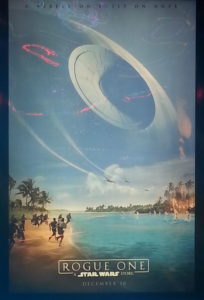 Amahl: The cameos were great for those who caught them. There were many including Bail Organa as you mentioned. I didn’t have any favorite characters, but I also enjoyed the droid character, K-2SO. This droid was wonderfully unpredictable and stole every scene he was in. You never knew what he was going to do or say.
Amahl: The cameos were great for those who caught them. There were many including Bail Organa as you mentioned. I didn’t have any favorite characters, but I also enjoyed the droid character, K-2SO. This droid was wonderfully unpredictable and stole every scene he was in. You never knew what he was going to do or say.
Anwar: What are your thoughts on the visual effects? I was impressed by how they CGI’d Grand Moff Tarkin (Peter Cushing and Guy Henry), Princess Leia (Carrie Fischer and Ingvild Deila), and some of the other characters. In the final battle of Scarif, I think they also CGI’d the Red- and Gold-Leaders who were actually in Episode IV: A New Hope during the Rebel assault on the Death Star. I also thought it was cool that they showed us the two thugs that confront Luke and Obi-Wan Kenobi at the Mos Eisley Space Port in Episode IV as well – Dr. Cornelius Evazan and Ponda Baba.
Amahl: The overall visual effects of this installment were focused on size and scale. The director and production artists showed just how large buildings or massive explosions look at the ground level, or points of view from ships and satellites. The explosions seen from the Death Star’s point of view let the audience know just how destructive and unnecessary weapons of mass destruction truly are.
Anwar: In terms of storytelling, I really like seeing conflicts between villains and enjoyed the rivalry between Krennic and Tarkin. The writers also showed us that Darth Vader never seemed to fully buy into the power of the Death Star – something we are shown in Episode IV where he warns Tarkin and the others that, “The ability to destroy a planet is insignificant next to the power of the force,” just before he uses his force choke again as Admiral Motti who belittles Vader for his belief in his “Ancient religion”. I love that scene. Oh and Vader uses the choke again in this movie.
Amahl: Yes exactly Anwar, from a story telling point of view, characters like Jar Jar Binks would’ve had no place in Rogue One. This story was too serious for the buffoonery of characters created for children.
Anwar: What did you think about the ending? Rogue One leaves off with Princess Leia receiving the plans. I would have preferred to have the ending a little more open ended and left to the imagination such as Jyn and Cassian transmitting the plans and wondering if they were actually received by the Rebellion – something to that effect. That’s just me as a writer.
Amahl: For me the cameo by a digital Leia was too much. It was kind of like eating a dessert that’s too sweet. Instead of showing the face of the digital double, they could’ve used an actual human body double with the white hood draped over her face. Or do an over the shoulder shot (an OTS shot), showing the classic Leia double bun hair style.
Anwar: Agree. Speaking of Carrie Fisher, I’d like to dedicate this review to her and her mother Debbie Reynolds who both passed away recently. Carrie Fisher was an icon. She was most known for her role as Princess Leia in Star Wars and was a fixture in many of our childhoods, but she played in a lot of other notable films as well, and she will be missed.
Okay bro I guess that wraps it up. It’ll be interesting to see if Lucas Film generates any further backstories for us, or if all of the new productions will simply move us forward from Episode VII. We should try to reconvene and review Hidden Figures – not a Super Hero or Sci-Fi film, but instead and historical piece involving the contributions of a group of black women to Astronomy which is an important story. After that it’ll definitely be Spider-Man: Homecoming. Based on the trailer, it looks like it’s going to be great.
 What’s your twitter handle just in case other enthusiasts want to follow and interact with you?
What’s your twitter handle just in case other enthusiasts want to follow and interact with you?
Amahl: It’s @amahldunbar.
Anwar: My Twitter handle is @BWArePowerful .
Thank you for taking the time to read this review. If you enjoyed this review, you might also enjoy:
• A review of Marvel’s Black Panther
• A review of Marvel’s Thor: Ragnarok
• A review of Marvel’s Spider Man: Homecoming
• A review of Marvel’s Dr. Strange
• A review of DC’s Justice League
• A review of Blade Runner 2049
To receive all of the most up to date content from the Big Words Blog Site, subscribe using the subscription box in the right hand column in this post and throughout the site. I can also be followed on the Big Words Blog Site Facebook page, and on Instagram at @anwaryusef76. While my main areas of focus are Education, STEM and Financial Literacy, there are other blogs/sites I endorse which can be found on that particular page of my site.


 I’ve written and co-written numerous movie reviews on my blog, and I’m a firm believer in the power of movies to inspire an interest in the sciences as they did for me – particularly Science Fiction films. Growing up with the
I’ve written and co-written numerous movie reviews on my blog, and I’m a firm believer in the power of movies to inspire an interest in the sciences as they did for me – particularly Science Fiction films. Growing up with the 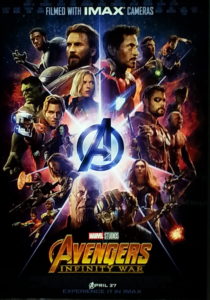 While my blog has distinct areas of focus and associated
While my blog has distinct areas of focus and associated 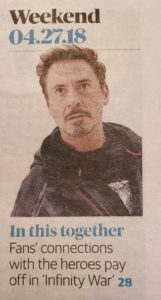 Now in terms of
Now in terms of  Overall, I was pleased with
Overall, I was pleased with 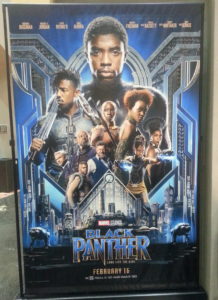 I’ve written numerous movie reviews on my blog. In the current review, I’m once again teaming up with my brother Amahl to discuss Marvel’s
I’ve written numerous movie reviews on my blog. In the current review, I’m once again teaming up with my brother Amahl to discuss Marvel’s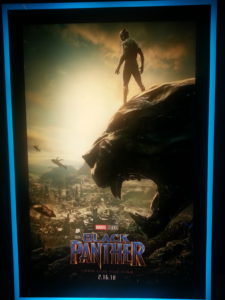 Anwar Dunbar: First I would like to acknowledge the
Anwar Dunbar: First I would like to acknowledge the  Our Twitter handles are
Our Twitter handles are 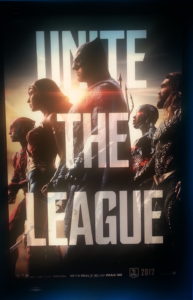 While my blog has distinct areas of focus and associated
While my blog has distinct areas of focus and associated 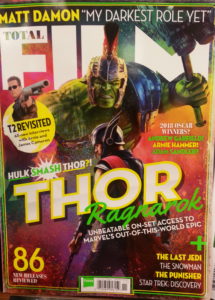 While my blog has distinct
While my blog has distinct 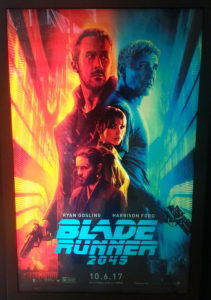 While my blog has distinct
While my blog has distinct 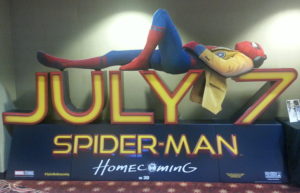 I recently wrote a review of the Tupac biopic
I recently wrote a review of the Tupac biopic  I recently co-wrote movie reviews with my brother Amahl Dunbar for
I recently co-wrote movie reviews with my brother Amahl Dunbar for  My brother Amahl Dunbar of the
My brother Amahl Dunbar of the  Amahl: The cameos were great for those who caught them. There were many including Bail Organa as you mentioned. I didn’t have any favorite characters, but I also enjoyed the droid character, K-2SO. This droid was wonderfully unpredictable and stole every scene he was in. You never knew what he was going to do or say.
Amahl: The cameos were great for those who caught them. There were many including Bail Organa as you mentioned. I didn’t have any favorite characters, but I also enjoyed the droid character, K-2SO. This droid was wonderfully unpredictable and stole every scene he was in. You never knew what he was going to do or say.